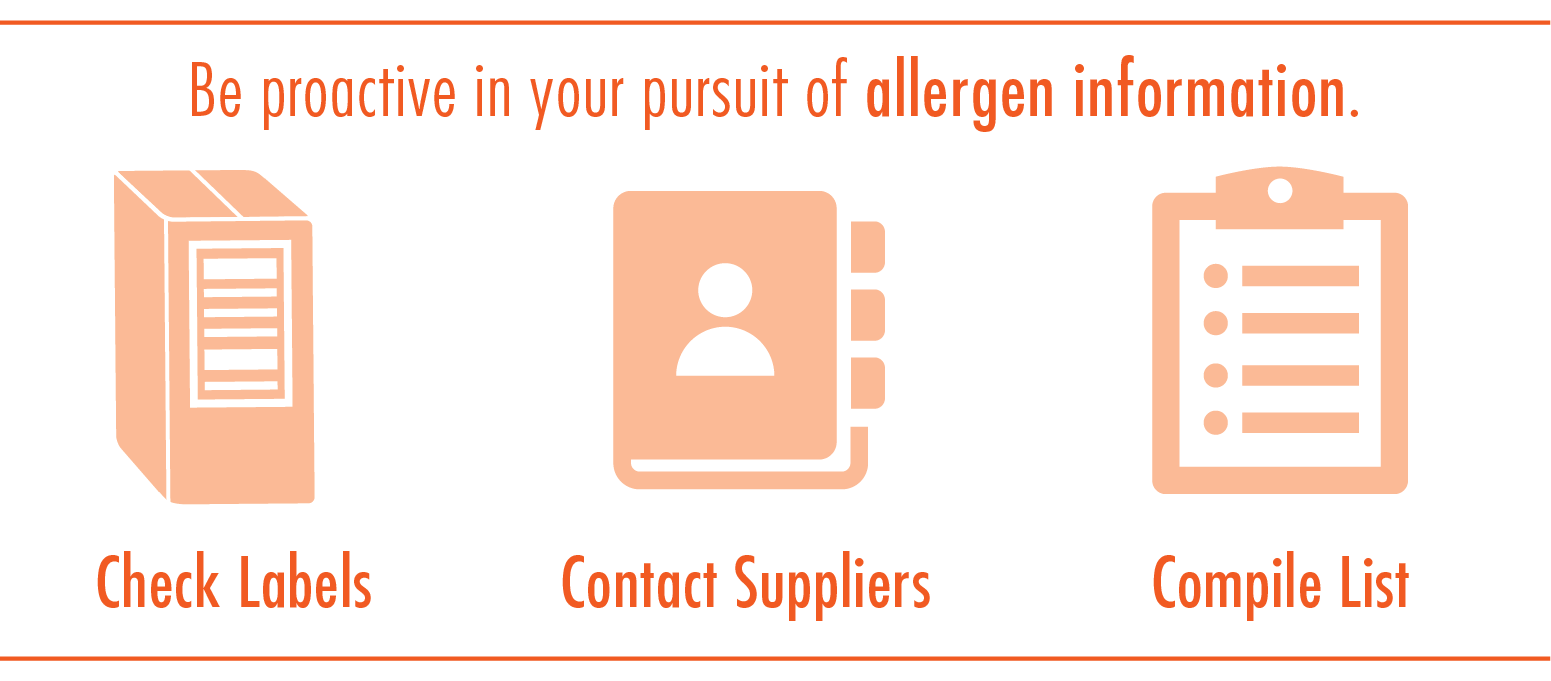
Finding Allergen Information on Labels
Some of the most common allergens are readily called out on labels and even have their own icons, but others can be trickier to identify.
- Ask your suppliers to provide the appropriate allergen information on all foods.
- For prepackaged items, the allergen information must be included on the label. Look for it in the “Ingredients” and “Contains” statement.
- When food is delivered, take note of what foods contain certain allergens.
- Assign a staff member to be in charge of collecting allergen information.
- Have the ingredient lists readily available to the staff in case a guest requests it. It’s a good idea for allergens to be clearly called out on your menu.
What to Do in Case of an Emergency
Allergic reaction symptoms can include:
- Tingling or itching in the mouth
- Hives, itching or eczema
- Swelling of the lips, face, tongue and throat or other parts of the body
- Wheezing, nasal congestion or trouble breathing
- Abdominal pain, diarrhea, nausea or vomiting
- Dizziness, lightheadedness or fainting

If a guest displays one or more of these symptoms associated, follow these steps immediately:
- Call your local emergency number for an ambulance.
- Give clear, detailed information on the guest’s reaction and the location of your business.
- Ask the guest whether they have any medication on them and how you can help them.
A Well Trained Staff Is Your Best Defense
This checklist can help you ensure your staff knows their part in helping manage allergens in your operation.
In the next installment of Allergen 101 we’ll look at checklist to help you manage allergens front of house and back of house.


